Table of contents
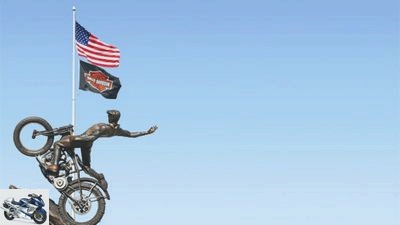
Harley-Davidson
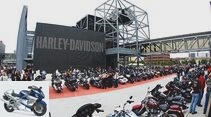


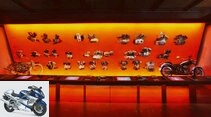
19th pictures
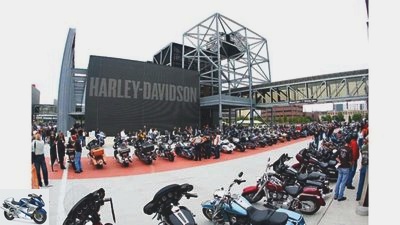
Cathcart
1/19
The new Harley-Davidson Museum opened on June 12, 2008 in Milwaukee at the corner of 6th Street and Canal Street.
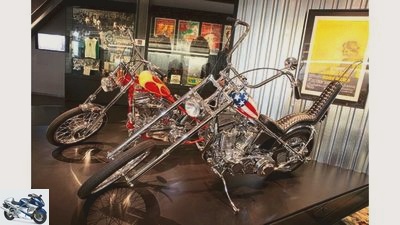
Cathcart
2/19
Captain America (front) and the Billy Bike – known from the film “Easy rider”.
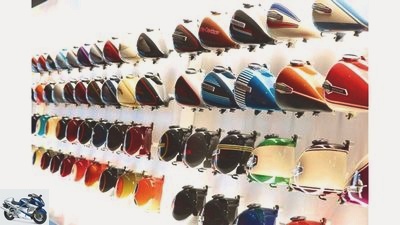
Cathcart
3/19
On the wall: 100 tanks show the development of the design.
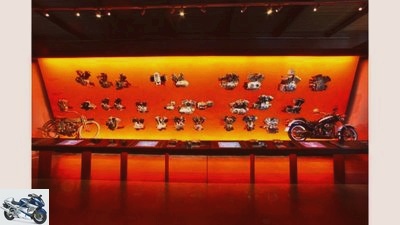
Cathcart
4/19
Engine Wall, left a 5-D from 1909, right a 2007 FLST.

Cathcart
5/19
An exploded model of the Knucklehead.
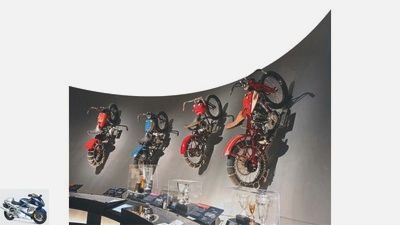
Cathcart
6/19
Hill climber, mounted steeply upwards.
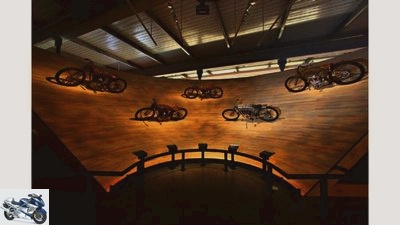
Cathcart
7/19
Boardtracker heyday was the 1920s.
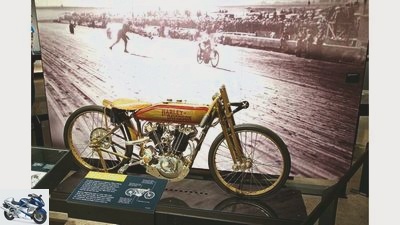
Cathcart
8/19
Eight-valve racer from 1923.
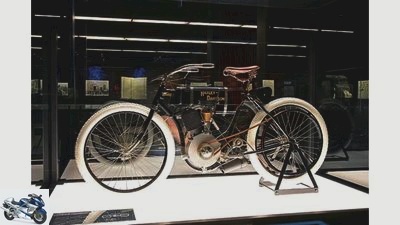
Cathcart
9/19
Serial Number 1, 1909.
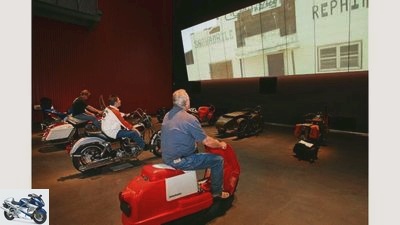
Cathcart
10/19
Sitting down: the museum cinema presents atmospheric films.
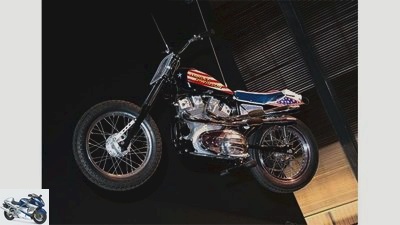
Cathcart
11/19
Evel Knievels stunt motorcycle, an XR 750.
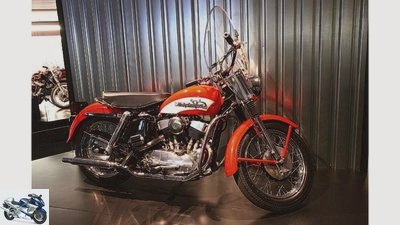
Cathcart
12/19
The King’s Bike: Elvis Presley owned this 1956 KH.
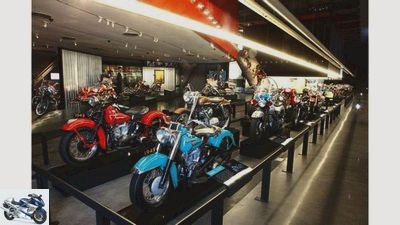
Cathcart
13/19
In the basement: at the very front two FL from 1948 and 1949.
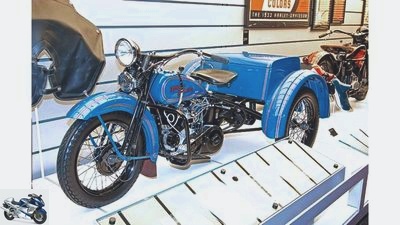
Cathcart
14/19
G Servi Car, 1932.
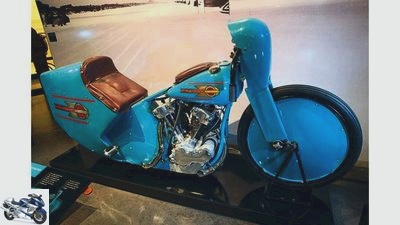
Cathcart
15/19
EL Record Bike, 1936.
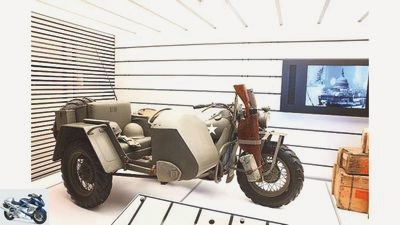
Cathcart
16/19
For the military: a 1942 XS combination.
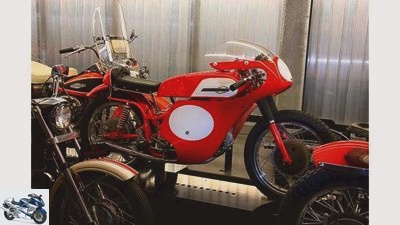
Cathcart
17/19
Right in the middle: a CRTT racer from 1965.
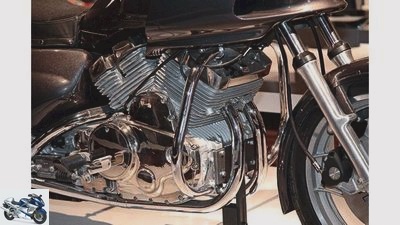
Cathcart
18/19
What remained was an experiment: the 1981 Nova V4 engine.
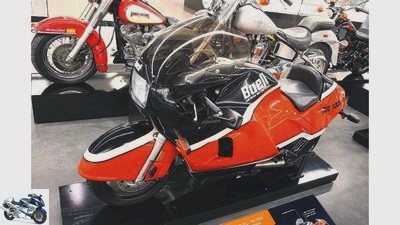
Cathcart
19/19
The beginnings of the Buell brand: an RR 1000 from 1987.
to travel
Harley Davidson Museum
Harley Davidson Museum
Yes, we can
Content of
The Harley-Davidson Museum in Milwaukee, which opened in June 2008, perfectly conveys the history of the cult brand and that of the motorcycle as such. It is also an architectural gem.
Claus-Peter Elberth
04/03/2009
Harley-Davidson not only lives from its tradition, but perhaps more than other motorcycle manufacturers. That is why the company has collected and stored its products over the decades – “for internal use”. In 2003 MOTORRAD CLASSIC was allowed to visit these secret rooms at the headquarters in Milwaukee (issue 3/2003). The words “deeply impressed” did not even begin to appreciate what was on display there: motorcycles, logically, from the very early to the current, in principle at least one of every model ever made. The sports equipment was also represented, as well as collections of parts, prototypes and exotics; the photo archive left visitors silent in awe of its size and quality.
But why so mysterious? Why not use at least one of the cleared and original production halls and install a Harley-Davidson show in it? Our enthusiasm earned only an uncomprehending shrug. However, in March 2005, the City of Milwaukee and the Motor Company signed an agreement to purchase 8 hectares of land at the intersection of 6th Street and Canal Street near the city center. The area is around 5 kilometers from the Harley headquarters. In February 2006 the construction plans were ready: a wheelchair-accessible complex of three connected buildings, 12,000 square meters inside. Its steel, stone and glass exterior matched the industrial environment and the Harley-Davidson brand. In 2006 the Flattrack legend Scott Parker opened the development of the site – befittingly with a burnout. On May 4th, 2007 the workers assembled the last steel girder – of course as part of a hearty celebration – and it opened on June 12th, 2008 Harley-Davidson his museum with a big party – just in time for the great economic crisis. Today one would probably not dare such a project anymore.
In total, the museum has around 8,000 exhibits, 170 of which are motorcycles. “They belong on the street, which is why we set up our exhibition like a street”, explains museum director Stacey Schiesl. Themed rooms bordering the asphalt strip are deepened by special areas. The oldest surviving Harley-Davidson from 1903, the “Serial Number 1”, Such a private room was dedicated: Who were the four men who made a dream come true with this motorcycle? How was Milwaukee at that time? Under what adverse conditions was the first Harley-Davidson created?
In all areas of the museum, memorabilia, advertising posters, letters, brochures, magazines and photographs bring epochs of the past 106 years to life. Everywhere guests can quench their thirst for knowledge on touchscreens, video screens and numerous other interactive elements. the “Engine room” for example, familiarizes visitors with the history, technology and sound of the V2 engines from Harley-Davidson.
The board track racing machines of the 1920s present themselves on a full-size steep wooden curve: At that time, these machines thundered at more than 190 km / h and without brakes over the wooden planks of the ovals soaked in oil and rain; one stands in awe in front of the installation and is just amazed. Next door you succumb to the magic of the toy Harleys from the first half of the 20th century and learn from police machines from several eras that Harley-Davidson has been supplying the executive branch since 1908 and that the US military has also relied on the machines from Milwaukee in both world wars familiar. Other areas of the exhibition are dedicated to motorcycle clothing and fashion from bygone times.
The themed complexes on the upper floor include the dealer network and the brand’s motorsport history – illustrated, among other things, by impressive hill climbers, the famous eight-valve racing machine from 1923 and the streamlined Knucklehead world record racer. On the exit to the ground floor, 100 classic tanks document the development of the design.
The lower floor deals with the time after the Second World War. The visitor first enters a typical motorcycle shop of that era, is happy about curious small Harley motorcycles as well as sporty Italian-American Aermacchi Harleys and then experiences how the company – taken over by the conglomerate AMF – has its product range on snowmobiles, boats, golf carts, Mokicks and scooters expanded. A video wall and numerous exhibits testify to the cult brand in film and music. Elvis Presley’s 1956 KH can be seen in this exhibition area. The King bought the machine before his big break. “Vocalist, self employed” is to be read as the occupation information on the insurance contract, which is made out alongside other original documents. stand next to “Captain America” and the “Billy Bike”, the replicas of the lost original machines from the cult strip legitimized by Peter Fonda “Easy rider”.
One of the curiosities of the exhibition is the Nova, for which – under AMF aegis – a 500cc V2, a 1000cc V4 and a 1500cc V6 engine were planned. All with a 60 degree cylinder angle, liquid-cooled and designed as four-valve engines with electronic fuel injection. The project developed by Porsche for Harley-Davidson at the time was never presented to the public. At the end of the day, visitors can enjoy an atmospheric film – sitting on a real historic Harley-Davidson. So if our visit in 2003 was a grain of sand in the foundation of this great museum, we would be proud of it. Even if the mammoth project cost Harley-Davidson all in all around 75 million US dollars, it is really worth every single penny of it.
Related articles
-
Harley Davidson 2021: more chrome, more colors for everyone
News 2022 New motorcycle items for 2022 Harley-Davidson 20th pictures Harley-Davidson 1/20 Harley-Davidson starts the Icons Collection with the Electra…
-
Second-hand advice: Harley Davidson Street Glide
manufacturer counselor Used purchase Second-hand advice: Harley Davidson Street Glide Second-hand advice: Harley Davidson Street Glide The Street Glide…
-
Harley-Davidson chief designer Willie G. Davidson
Harley-Davidson 12th pictures Harley-Davidson 1/12 “They say that form follows function. but I believe that form and function serve the emotions – and…
-
LiveWire own Harley brand for electric motorcycles
Harley-Davidson 18th pictures Harley-Davidson 1/18 The production version of the electric Harley will roll onto the German market in September 2019. It…
-
Motorbike Museum Schloss Augustusburg
to travel Augustusburg Castle Motorcycle Museum Scene: Augustusburg Castle Motorcycle Museum 175 motorcycles from almost 125 years Content of 50 years…
-
Patent: Harley wants to adaptively drive in a convoy
Harley-Davidson 4th pictures Harley-Davidson 1/4 Using GPS tracking, motorcycles with adaptive cruise control should receive more precise speed…
-
Harley-Davidson 338R – Entry-level Harley for China is coming in 2020
New items 2020 Top topic Harley-Davidson 15th pictures Harley-Davidson 1/15 Harley-Davidson brings a new entry-level model. Harley-Davidson 2/15 Pictures…
-
North Coast 500 on Harley Davidson Live Wire
Belstaff, TurnerTwins 13th pictures Belstaff, TurnerTwins 1/13 The Turner twins set off from Glasgow in December 2020 with two Harley-Davidson Live Wire…
-
Harley future: Success again with “Hardwire”
manufacturer 10 pictures Jascek Bilski, Rossen Gargolov, Harley-Davidson 1/10 1st place: Harley-Davidson XL 1200 X with a total of 9,851 new…
-
Schulz motorcycles Scene: Harley and MZ meeting Scene: Harley and MZ meeting Harley-Fete and MZ-Emmenrausch Some celebrate their 105th birthday, others…